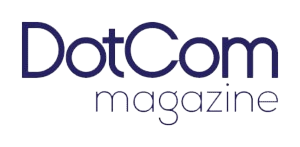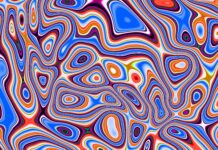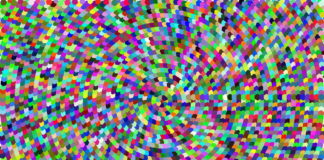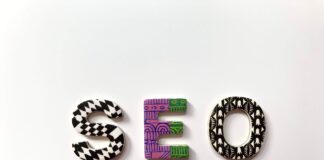AI in fashion advertising, AI in fashion advertising, AI in fashion advertising — these words are more than just a trend; they define the new era of marketing in the style industry. With brands striving to stay relevant in a highly competitive environment, understanding the role of artificial intelligence has become essential. AI in fashion advertising helps brands deliver hyper-personalized campaigns, optimize ad spending, forecast trends, and even influence consumer behavior at scale. If you’re navigating the future of style branding, these are the top ten points you need to remember about AI in fashion advertising to stay relevant, competitive, and profitable.
1. AI-Driven Personalization is the Future of Fashion Ads
Modern consumers expect advertising tailored to their unique preferences, and AI makes this possible with incredible precision. Algorithms analyze browsing history, purchase patterns, and social media interactions to deliver highly personalized content. Fashion retailers now use AI to predict which products are most likely to appeal to specific audiences, dramatically improving engagement and conversion rates.
AI-driven personalization also supports dynamic ad creation. For example, if a customer often browses streetwear, AI will serve ads featuring sneakers or hoodies instead of formalwear. This level of customization was impossible just a few years ago, but it’s now standard practice thanks to artificial intelligence.
2. Predictive Analytics Enhances Campaign Effectiveness
One of the key advantages of AI in fashion advertising is the ability to forecast outcomes. Predictive analytics, powered by machine learning, helps advertisers anticipate which types of creatives, formats, or messages will perform best. These insights minimize guesswork, enabling brands to make data-informed decisions before launching campaigns.
Fashion brands now use AI to identify future style trends by analyzing vast data sets, from runway images to TikTok hashtags. These insights help marketers stay ahead of the curve, ensuring their campaigns align with emerging consumer interests and sentiments.
3. Chatbots and Virtual Stylists Are Revolutionizing Customer Engagement
AI-powered chatbots are more than just customer service tools—they’re essential components of fashion advertising. These bots interact with potential buyers in real time, answer questions, provide fashion advice, and guide customers through the buyer journey.
Some brands have introduced AI virtual stylists that recommend products based on customer preferences and body types. This elevates the shopping experience while subtly advertising multiple pieces from a collection. As conversational AI continues to improve, expect even more engaging and intelligent advertising touchpoints.
4. AI Enhances Visual Content Creation
In fashion, visual appeal is everything. AI tools now assist in creating stunning visuals without needing a full-scale photoshoot. From auto-generating backgrounds to modeling clothing on virtual avatars, AI drastically reduces time and costs associated with traditional content creation.
Tools like GANs (Generative Adversarial Networks) are used to create realistic fashion images that look indistinguishable from real photos. These images are ideal for digital ads, especially for fast-moving campaigns on social platforms where new content is constantly required.
5. Influencer Marketing Gets Smarter with AI
Influencer marketing remains a dominant force in fashion advertising. AI refines this process by identifying the right influencers based on audience demographics, engagement rates, and historical campaign performance. Rather than relying on manual analysis or gut instinct, brands now use AI to select influencers most likely to drive meaningful ROI.
Moreover, AI tools track the authenticity of influencer audiences, identifying fake followers and engagement pods. This ensures advertising budgets are spent on genuine influence rather than inflated metrics.
6. Voice Search Optimization is a Growing Priority
As smart speakers and voice assistants become household staples, voice search is influencing how consumers discover fashion brands. AI helps advertisers optimize their content for voice queries, making sure product listings and campaign messaging are structured to appear in spoken search results.
Fashion brands now incorporate voice-activated campaigns where users can ask Alexa or Google Assistant for the latest collections or trends. This futuristic advertising channel will only grow, making AI a key enabler for audio-based marketing strategies.
7. Real-Time Bidding and Programmatic Advertising Are Powered by AI
Real-time bidding (RTB) allows advertisers to purchase digital ad space through automated auctions in milliseconds. AI determines which ad to show to which user, at what time, and at what price—maximizing efficiency and impact.
In fashion advertising, RTB combined with behavioral targeting ensures that ads reach the most relevant audience segments. For example, a customer who recently viewed sustainable denim might be shown a promotion for eco-friendly jeans on a different platform, encouraging cross-channel conversion.
8. AI Enables Sentiment Analysis for Smarter Messaging
AI can analyze thousands of online conversations, reviews, and social media posts to determine how consumers feel about a brand, campaign, or trend. Sentiment analysis helps advertisers refine messaging, tone, and content strategy to match audience moods.
Fashion is emotional—it’s about identity, confidence, and culture. By aligning ads with the emotional tone of their audience, brands can connect on a deeper level. AI sentiment analysis tools make this possible at scale, ensuring campaigns are not only data-driven but also emotionally intelligent.
9. AI Supports Sustainability in Fashion Advertising
Consumers increasingly demand transparency and sustainability from the brands they support. AI helps fashion companies promote their eco-friendly practices more authentically. By tracking supply chain data and highlighting sustainable sourcing, brands can create compelling advertising narratives that resonate with conscious consumers.
Additionally, AI minimizes overproduction by forecasting demand more accurately, reducing inventory waste. This eco-friendly aspect of AI extends to advertising too—ensuring campaigns promote items that are actually in stock and in demand.
10. AI is Redefining ROI Measurement and Optimization
Gone are the days when campaign success was measured solely by clicks and impressions. AI offers granular insights into user behavior post-ad interaction, such as how long someone viewed a product, whether they shared it, or how quickly they returned to make a purchase.
These insights allow for continuous campaign optimization. AI learns which creatives perform best in different regions or demographics, and automatically adjusts campaign parameters. This not only boosts ROI but also ensures budget efficiency in high-stakes advertising strategies.
Conclusion
AI in fashion advertising is more than just a tool—it’s a game-changer. From personalized recommendations and automated ad buying to visual content creation and emotional intelligence, AI touches every aspect of how fashion brands communicate with consumers. As technology evolves, staying updated on these ten essential points ensures you’re not just keeping up, but staying ahead. Embracing AI in fashion advertising doesn’t just elevate campaign performance—it transforms the brand’s relationship with its audience, ushering in a new era of smart, stylish, and data-driven storytelling.
If you’re in the fashion advertising space, understanding these dynamics isn’t optional—it’s vital. The integration of AI is not a future concept; it’s the present reality. By mastering these principles, you’re not only prepared for what’s next—you’re shaping it.














